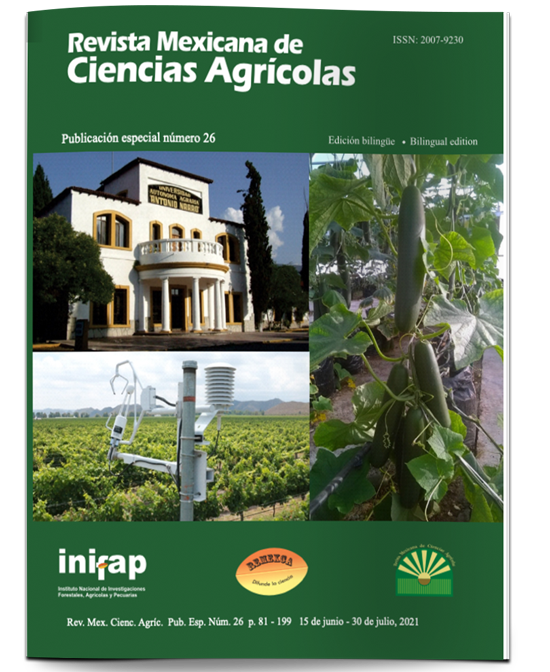Development of an efficient method for oregano micropropagation
DOI:
https://doi.org/10.29312/remexca.v0i26.2944Keywords:
Glomus intraradicens, biotización, fotoperiodoAbstract
Lippia graveolens, or Mexican oregano, is a plant of economic importance and the collection of foliage is mainly carried out from natural populations. Micropropagation proposes an alternative to produce material, with high phytosanitary quality and propagation in less time of individuals selected for their characteristics of commercial value. The objective of this work was to establish a protocol for the in vitro propagation of Lippia graveolens. The research was conducted in 2018-2019. The establishment was achieved with nodal segments in basal medium (MS), at this stage 57.32% of axenic explants were recovered. For the propagation stage four concentrations (0, 1, 2 and 3 mg L-1) of benzylaminopurine (6-BAP) were added to the MS medium, the number of shoots and height of the plan were evaluated, the best results in multiplication were achieved with 3 mg L-1 of 6-BAP, obtaining 40.35 shoots per explant. The length of the shoot was longer in treatments without growth regulators. For rooting, it was tested with three concentrations (0, 0.1, 0.3 and 0.5 mg L-1) of auxins (indole acetic acid and indole butyric acid) and the rooting percentage and root length were evaluated, obtaining the same result with and without auxin regulators. In the acclimatization phase, photoperiod (16 h and 24 h) was evaluated with and without mycorrhizas (Glomus intraradicens). The best treatment was obtained with 24 h light and the addition of mycorrhizas with 86.11% survival.
Downloads
Downloads
Published
How to Cite
Issue
Section
License
Copyright (c) 2021 Revista Mexicana de Ciencias Agrícolas

This work is licensed under a Creative Commons Attribution-NonCommercial 4.0 International License.
The authors who publish in Revista Mexicana de Ciencias Agrícolas accept the following conditions:
In accordance with copyright laws, Revista Mexicana de Ciencias Agrícolas recognizes and respects the authors’ moral right and ownership of property rights which will be transferred to the journal for dissemination in open access. Invariably, all the authors have to sign a letter of transfer of property rights and of originality of the article to Instituto Nacional de Investigaciones Forestales, Agrícolas y Pecuarias (INIFAP) [National Institute of Forestry, Agricultural and Livestock Research]. The author(s) must pay a fee for the reception of articles before proceeding to editorial review.
All the texts published by Revista Mexicana de Ciencias Agrícolas —with no exception— are distributed under a Creative Commons License Attribution-NonCommercial 4.0 International (CC BY-NC 4.0), which allows third parties to use the publication as long as the work’s authorship and its first publication in this journal are mentioned.
The author(s) can enter into independent and additional contractual agreements for the nonexclusive distribution of the version of the article published in Revista Mexicana de Ciencias Agrícolas (for example include it into an institutional repository or publish it in a book) as long as it is clearly and explicitly indicated that the work was published for the first time in Revista Mexicana de Ciencias Agrícolas.
For all the above, the authors shall send the Letter-transfer of Property Rights for the first publication duly filled in and signed by the author(s). This form must be sent as a PDF file to: revista_atm@yahoo.com.mx; cienciasagricola@inifap.gob.mx; remexca2017@gmail.
This work is licensed under a Creative Commons Attribution-Noncommercial 4.0 International license.



